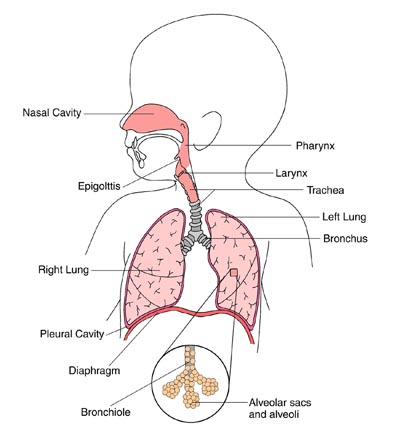Pneumonia | Symptoms & Causes
What are the symptoms of pneumonia?
All pneumonias share the following symptoms. Keep in mind that each child may experience them differently:
- fever
- chest or stomach pain
- decrease in appetite
- chills
- breathing fast or hard
- vomiting
- headache
- not feeling well
- fussiness
Pneumonia | Diagnosis & Treatments
How is pneumonia diagnosed?
Diagnosis is usually made based on the season and the extent of your child’s illness. Your child’s physician may diagnose simply on a thorough history and physical examination, but may also include any of following tests to confirm the diagnosis:
- chest x-ray: a diagnostic test which uses invisible electromagnetic energy beams to produce images of internal tissues, bones, and organs onto film.
- blood tests: blood count for evidence of infection; arterial blood gas to analyze the amount of carbon dioxide and oxygen in the blood.
- sputum culture: a diagnostic test performed on the material that is coughed up from the lungs and into the mouth. A sputum culture is often performed to determine if an infection is present.
- pulse oximetry: an oximeter is a small machine that measures the amount of oxygen in the blood. To obtain this measurement, a small sensor (like a Band-Aid) is taped onto your child’s finger or toe. When the machine is on, a small red light can be seen in the sensor. The sensor is painless and the red light does not get hot.
How is pneumonia treated?
Treatment may include antibiotics for bacterial pneumonia. Antibiotics may also speed recovery from mycoplasma pneumonia and some special cases. There is no clearly effective treatment for viral pneumonia, which usually clears up on its own. Other treatment may include:
- appropriate diet
- increased fluid intake (giving your child more liquids to drink)
- cool mist humidifier in your child's room
- acetaminophen (for fever and discomfort)
- medication for cough
Your child may be treated in the hospital if she is having severe breathing problems. While in the hospital, treatment may include:
- intravenous (IV) or oral antibiotics
- intravenous (IV) fluids, if your child is unable to drink well
- oxygen therapy
- frequent suctioning of your child's nose and mouth (to help get rid of thick secretions)
- breathing treatments, as ordered by your child's physician


